How Big Is Indian Army?
Indian Army Size and Numbers : A Detailed Overview Of The Indian Armed Forces
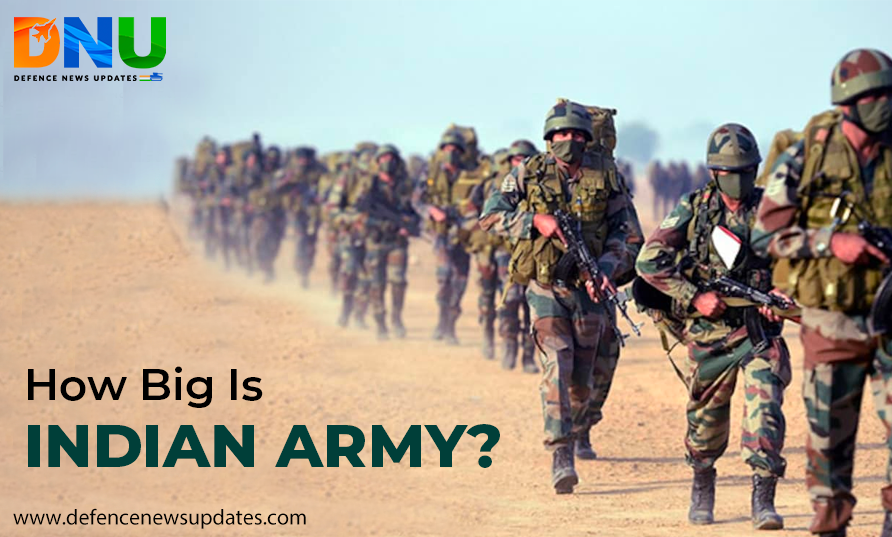
The Indian Army is the land-based branch and the largest component of the Indian Armed Forces.
The Supreme Commander of the Indian Armed Forces is the President of India.
The Indian Armed Forces, like other democracies, are controlled by the nation’s chosen political leadership – the Government of India.
The Union Cabinet, the Defence Minister, the Chiefs of Staff Committee (COSC), and the Chiefs of Army, Naval, and Air Staff of their respective Services all wield executive power in turn.
The Ministry of Defence is in charge of personnel, budgetary, and resource management.
The Indian Army is commanded by the Chief of Army Staff (COAS), who is a four-star general.
As of 2020, the Indian Army has a strength of 1,237,117 active troops and 960,000 reserve troops, it is the world’s largest standing army surpassing the Chinese Army.
It is a component of national power alongside the Indian Navy and the Indian Air Force
The army has been involved in four wars with neighboring Pakistan and one with China. Other major operations undertaken by the army include Operation Vijay, Operation Meghdoot, Operation Cactus, and Operation Poomalai.
The Indian Army has a large pool of reservists, which is estimated at around 27 million. The army also has its own artillery, armour, engineering, and special forces units.
The Army officer intake is currently divided into four distinct streams: the NDA; the graduate direct entry stream (IMA); cadets chosen from the ranks and initially trained at the Army Cadet College – an adjunct of the IMA; and a five-year Short Service Commission stream from the Officers Training Academy, Madras and Gaya.
A few selected Junior Commissioned Officers (a grade seen only in the armies of India and Pakistan) are given Regimental Commissions.
Regular Commissions are available to Short Service employees through selection and review.
The Indian Army is one of the largest contributors to United Nations peacekeeping forces. It has participated in UN peacekeeping missions in Congo, Somalia, Rwanda, Ethiopia, South Sudan, and Bosnia.
The Indian Army is also a major force in counter-insurgency operations. It has been involved in operations against the Naxalites in Central India and has also conducted operations against insurgent groups in Jammu and Kashmir and the Northeast.Article Sponsored Find something for everyone in our collection of colourful, bright and stylish socks. Buy individually or in bundles to add color to your sock drawer!
The Indian Army is the world’s largest voluntary army. It is an all-volunteer force and does not conscript soldiers.
The Indian Army has a wide range of equipment, including tanks, armored personnel carriers, artillery, helicopters, and unmanned aerial vehicles.
Indian Armed Forces: Size, Figures and Stats
| Indian Armed Forces | |
|---|---|
 Emblem of the Indian Armed Forces | |
 Flag of Indian Armed Forces | |
| Service branches | |
| Headquarters | Ministry of Defence, South Block, New Delhi |
| Leadership | |
| Supreme Commander | |
| Prime Minister | |
| Minister of Defence | |
| Defence Secretary | |
| Chief of Defence Staff | |
| Personnel | |
| Military age | 18 |
| Conscription | No |
| Reaching military age annually | 23,116,044 |
| Active personnel | 1,455,550 (ranked 2nd) |
| Reserve personnel | 1,155,000 (ranked 3rd) |
| Expenditures | |
| Budget | ₹525,166 crores (US$66 billion) (2022–23) (ranked 3rd) |
| Percent of GDP | 2.4% (2019) |
The Indian Army is organized into seven commands, each under the control of a lieutenant general. The commands are:
1. Northern Command
The Northern Command was first put together in 1908 as the Northern Army of the British Indian Army. When India got its independence in 1947, it was swept out.
In 1972, it was brought back. At the moment, it is in charge of the XIV Corps (Leh), XV Corps (Srinagar), I Corps (Mathura), and XVI Corps (Nagrota). Lieutenant General Upendra Dwivedi is in charge of it right now. [2022]
The Northern Command of the Indian Army is responsible for the defense of the country’s northern borders with Pakistan and China.
The command is headquartered in Udhampur in Jammu and Kashmir and is commanded by a Lieutenant General.
The Northern Command was formed in 1972 after the Bangladesh War, and its area of responsibility includes the states of Jammu and Kashmir, Himachal Pradesh, Punjab, Rajasthan, and Uttarakhand.
The command has a strength of over 200,000 personnel and is responsible for guarding the Line of Control with Pakistan, as well as the Line of Actual Control with China.
In addition to its traditional roles, the Northern Command has also been actively involved in counter-insurgency operations in Jammu and Kashmir.
As a result of its dedication and hard work, the Northern Command has been able to maintain peace and stability in one of the most volatile regions of the world.
| Northern Command | |
|---|---|
 Insignia of Northern Command | |
| Active | 1908–1947 1972 – present |
| Country | |
| Branch | |
| Type | Command |
| HQ | Udhampur |
| Motto(s) | forever in operations |
| Commanders | |
| GOC-in-C | Lt Gen Upendra Dwivedi, AVSM |
| Notable commanders | Lt Gen P. S. Bhagat Gen S. Padmanabhan Gen Deepak Kapoor |
| Insignia | |
| Flag |  |
2. Central Command
Central Command was founded during World War II in 1942 and abolished in 1946.
Southern Command was in charge of the majority of Indian Army training activities until Central Command was founded in April 1942, when it took over responsibility for some of the training locations.
Central Command of the Indian Army is one of the seven operational commands of the Indian Army.
It is responsible for the defense of the Indo-Gangetic Plain and the central sector of the India-Pakistan border. The command headquarters is located in Lucknow, Uttar Pradesh.
The present commander is Lieutenant General Manoj Mukund Naravane.
Central Command was established on 15 April 1966 with its headquarters at Shimla.
In November 1967, the headquarters was moved to Kanpur. In January 1976, it was again shifted to its present location in Lucknow.
The command has seen action during various conflicts, including the 1965 and 1971 wars with Pakistan, and the 1999 Kargil War.
3. Eastern Command
The Indian Army’s Eastern Command is one of six operational commands.
Its headquarters are in Fort William, Kolkata, West Bengal. The Eastern Command was established on November 1, 1920.
The Command is led by a three-star general with the title General Officer Commanding-in-Chief (GOC-in-C).
Lieutenant General Rana Pratap Kalita is the current GOC-in-C of Eastern Command.
The Eastern Command of the Indian Army is responsible for the country’s eastern borders with Bangladesh and Myanmar.
The command is headquartered in Kolkata and is divided into three Army corps, each responsible for a different sector of the border.
The 1st Corps is responsible for the sector along the Bangladesh border, while the 3rd Corps covers the border with Myanmar.
In addition to its frontline duties, the Eastern Command also provides support to the Indian Air Force in its operations against insurgents in northeastern India.
The command has been active in several major military operations, including the 1971 war with Pakistan and the 1999 Kargil War.
| Eastern Command | |
|---|---|
 Insignia of the Eastern Command | |
| Active | 1920–present |
| Country | |
| Branch | |
| Type | Command |
| Headquarters | Kolkata |
| Engagements | World War II Sino-Indian War Indo-Pakistani War of 1971 2020 China–India skirmishes |
| Commanders | |
| Current commander | Lt Gen Rana Pratap Kalita UYSM, AVSM, SM, VSM |
| Notable commanders | Field Marshal Kodandera Madappa Cariappa Gen Rajendrasinhji Jadeja Gen K S Thimayya Gen P. P. Kumaramangalan Field Marshal Sam Manekshaw Lt Gen S. P. P. Thorat Gen A. S. Vaidya Gen V. N. Sharma Gen V. K. Singh Gen Bikram Singh Gen Dalbir Singh Suhag Gen M. M. Naravane Gen Anil Chauhan Gen Manoj Pande |
4. Western Command
Western Command is an Indian Army command-level structure.
It was founded in 1920 and was disbanded after being demoted to an independent district and eventually merging with Northern Command to establish the North-western Army.
It was re-established in 1947, following the relocation of Northern Command Headquarters to Pakistan. Until 1972, it was in charge of India’s borders with Pakistan in the north and west, as well as the Chinese border in the north.
The Command Headquarters are located in Chandimandir, Haryana, about 5 kilometers east of Chandigarh.
The Western Command of the Indian Army is responsible for the security of India’s western borders with Pakistan and China.
The head of the Western Command is a Lieutenant General, who reports to the Army Headquarters in New Delhi.
The Western Command was earlier responsible for the security of India’s north-western frontier with Pakistan.
In 1965, the Western Command was involved in the Indo-Pakistani War of 1965.
In 1971, it was responsible for the liberation of Bangladesh.
In 1999, the Western Command was involved in the Kargil War with Pakistan.
5. Army Training Command
The Army Training Command, abbreviated as ARTRAC, is one of the seven commands of the Indian Army. ARTRAC is responsible for conducting all training activities of the Indian Army.
It also provides services and support to other commands in the form of training facilities, doctrine development, and training management.
The Army Training Command was formed on October 1, 1991, in Mhow, Madhya Pradesh, and was relocated to Shimla on March 31, 1993. The command’s primary goal is to maximise training efficacy.
The Directorate General of Military Training (DGMT) and ARTRAC merged in 2019.
The Rashtriya Military Schools are managed by the DGMT.
The command has a total of four training centres across the country. ARTRAC’s mandate is to provide quality training to soldiers in order to equip them with the necessary skills and knowledge to meet the challenges of modern warfare.
In addition to providing basic training, ARTRAC also offers advanced courses in a variety of subjects, such as artillery, armoured warfare, and engineering.
The command also has a dedicated centre for women military personnel, which provides specialised training to women soldiers.
ARTRAC is an important part of the Indian Army and plays a vital role in ensuring that the army is prepared for any situation.
6. South Western Command
The Indian Army’s South Western Command was founded on 15 April 2005 and became fully operational on 15 August 2005.
It was done in response to new dangers and possibilities along the Western Indo-Pak border. Its headquarters are in Jaipur, Rajasthan.
The operational units of the command include I Corps, which was previously under Central Command, X Corps, which was transferred from Western Command, and an Artillery Division.
The Western Command is now allocated operational units under the I Corps, X Corps, and 42nd Artillery Division.
The command has three infantry divisions (1 for mountain warfare), one armoured division, one artillery division, two Reorganized Army Plains Infantry Divisions (RAPID), one armoured brigade, one air-defence brigade, and one engineering brigade.
Except for the 33 Armoured Division, the forces of I Corps were relocated to Northern Command in 2021 to focus on the Sino-Indian frontier in Ladakh.
The primary role of the South Western Command is to safeguard India’s western borders with Pakistan and China.
The command has a large number of troops deployed along the Line of Control with Pakistan and the Line of Actual Control with China.
The South Western Command also has a significant role to play in disaster relief operations in Rajasthan, Gujarat and Maharashtra.
In recent years, the command has been actively involved in a number of joint training exercises with the armed forces of other countries.
These exercises have helped to further enhance the operational capabilities of the South Western Command.
7. Andaman and Nicobar Command
The Andaman and Nicobar Command (ANC) is the Indian Armed Forces’ first and only tri-service theatre command, headquartered in Port Blair on the Andaman and Nicobar Islands, a Union Territory of India.
The Command also includes personnel from the Indian Coast Guard and other security agencies.
It was established in 2001 to protect India’s strategic interests in Southeast Asia and the Malacca Strait by enhancing the fast deployment of military assets in the region.
It offers logistical and administrative support to naval ships deployed to East Asia and the Pacific Ocean.
The ANC is responsible for safeguarding India’s maritime interests in the region and maintaining peace and stability in the Andaman and Nicobar Islands.
The Command has conducted a number of successful operations in recent years, including Operation Rainbow (a humanitarian relief operation in the aftermath of the 2004 Indian Ocean tsunami) and Operation Island Watch (an anti-piracy mission in the waters off the coast of Somalia).
The ANC is a vital part of India’s national security apparatus, and it plays a crucial role in safeguarding India’s interests in the Indo-Pacific region.
| Andaman and Nicobar Command | |
|---|---|
 | |
| Founded | September 2001 |
| Country | |
| Type | Tri-Service Command |
| Headquarters | Port Blair |
| Commanders | |
| Commander-in-Chief, Andaman and Nicobar Command | Lieutenant General Ajai Singh, AVSM |
asdasdasdasd


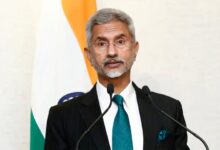
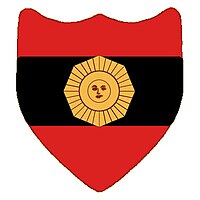
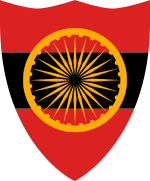




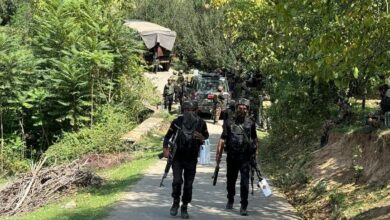
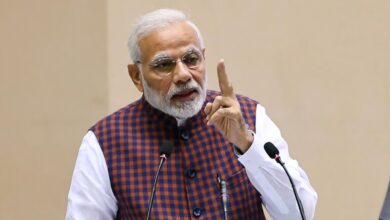
Facebook Comments